Femtosecond Laser Cataract Surgery
A Bladeless Cataract Surgery Expert In New York City
Laser-assisted cataract surgery is sometimes called “femtosecond cataract surgery” or “femtosecond-assisted cataract surgery.” Using laser assistance during cataract surgery allows for a more gentle and precise approach in which the laser performs many of the steps that otherwise must be done manually.
FEMTOSECOND LASER CATARACT SURGERY NYC
FEMTOSECOND CATARACT SURGERY FAQS
What Is Femtosecond Cataract Surgery?
Laser-assisted cataract surgery is sometimes called “femtosecond cataract surgery” or “femtosecond-assisted cataract surgery.” Using laser assistance during cataract surgery allows for a more gentle and precise approach in which the laser performs many of the steps that otherwise must be done manually. Specifically, the laser can be used to create the opening in the capsular bag, which contains the lens and can be used to soften the lens, thus requiring less ultrasound energy to break up the lens in the eye, resulting in less potential damage to the cornea. The laser-assisted technique may be particularly beneficial in patients with Fuchs’ corneal dystrophy or cataracts that have become very advanced or white (mature).
Why this Surgery?
The laser-assisted technique may be particularly beneficial in certain medical conditions, such as patients with Fuchs’ corneal dystrophy or cataracts that have become very advanced or white (mature), or subluxed crystalline lenses.
Furthermore, for the best visual outcomes with toric and multifocal IOLs, the exact placement of the lens inside the eye is critical – more critical than when a monofocal IOL is used. Use of a femtosecond laser during certain steps in cataract surgery can help us better position the toric or multifocal IOL to take full advantage of the lens design for optimal vision.
The procedure itself is performed in the same facility as the first step of your cataract surgery. You will have topical numbing drops on your eye. You will be asked to look into the laser as the laser docks and creates the steps above. The laser procedure lasts about 30 seconds.
In addition to the laser procedure in the beginning of the surgery (the femtosecond laser portion of the femtosecond assisted cataract surgery), oftentimes another imaging modality will be used mid-surgery. This is performed after the cataract is removed and before the new lens is implanted. It is called Optiwave Refractive Analaysis (ORA) and is an imaging modality similar to that used in the pre-operative visit. It is used to help determine the power of the lens needed to be implanted as well as any changes needed to be done to the astigmatism correction. In cases of patients with astigmatism, ORA is performed after the lens is implanted to then make any final adjustments to the astigmatism correction.
There have been clear data showing the post-operative benefits of femtosecond assisted cataract surgery compared to manual surgery in retrospective chart reviews.
It is important to stress that everyone’s eyes and visual needs are different. After thoroughly evaluating your ocular situation and discussing your visual goals, Dr. Rapoport will explain the benefits and limitations of the available lens implants and laser assistance for your specific case and help you select the best option.

Tell me more about the laser cataracts surgery
The laser can by used to perform the following steps of the cataract surgery:
-
The laser can create the opening in the capsular bag (the capsulotomy) in a more precise manner. The eye’s natural lens is surrounded by a very thin, clear capsule. In cataract surgery, the front portion of the capsule is removed in a step called an anterior capsulotomy. This enable the surgeon to gain direct access to the cloudy lens (cataract). It’s very important that the remainder of the lens capsule that remains intact in the eye is not damaged during cataract surgery, because it must hold the artificial lens implant in place for the rest of the patient’s life. In traditional cataract surgery, the surgeon creates an opening in the capsule with a small needle and then uses that same needle or a forceps to tear the capsule in a circular fashion. In laser cataract surgery, the anterior capsulotomy is performed with a femtosecond laser instead. This is especially important when implanting a toric or multifocal (presbyopia-correcting intraocular lenses), as it helps with the positioning of the lens implanted itself. There is evidence that femtosecond assisted cataract surgery can improve patient outcomes with presbyopia correcting IOLs. The laser capsulotomy affects ultimate lens position and the way the capsular bag shrinks around the IOL, which is size and centration dependent. Having a well-centered, standardized capsulotomy provides a more reliable outcome. Additionally, the laser cataract surgery may also reduce the risk of capsule breakage that can cause vision problems after surgery. The lens capsule is as thin as film and it’s important that the portion that is left inside the eye after cataract surgery is undamaged, so it can hold the IOL in the proper position for clear, undistorted vision.
-
The lens is used to fragment, or soften the lens, thus requiring less phacoemulsification ultrasound energy to break up the lens in the eye, resulting in less potential damage to the cornea. In traditional cataract surgery, the ultrasonic device that breaks up the cataract is inserted into the incision. During this phacoemulsificatin procedure, the ultrasound energy can lead to heat build up in the incision, which sometimes can burn the incision and negatively affect the visual outcome by actually inducing astigmatism. The laser, on the other hand, softens the cataract as it breaks it up. By breaking up the cataract into smaller, softer pieces, less energy should be needed to remove the cataract, so there should be less chance of burning and distorting the incision.
-
The laser is used for correcting astigmatism. In patients with corneal astigmatism, the laser can be used to make incisions in the cornea that may reduce or eliminate the astigmatism, thus decreasing the reliance on glasses or contacts. To reduce the need for prescription eyeglasses ore reading after cataract surgery, it is important that little or no astigmatism is present after implantation of presbyopia-correcting multifocal IOLs and accommodating IOLs. Astigmatism usually is caused by the cornea being more curved in one meridian than others. (In other words, it’s shaped somewhat like a rugby ball rather than a football). To reduce astigmatism, small incisions can be placed in the periphery of the more curved meridian; as the incisions heal, this meridian flattens slightly to give the cornea a rounder, more symmetrical shape. This procedure is called limbal relaxing incisions (LRI). During refractive laser-assisted cataract surgery, the OCT image can be used to plan laser LRIs in a very precise location, length and depth. This increases the accuracy of the astigmatism-reducing procedure and the probability of good vision without glasses after cataract surgery. In patients who do not have enough astigmatism to require a toric intraocular lens but enough that they will still require glasses or contacts, the femtosecond lens is a great option to eliminate the astigmatism. There is evidence that femtosecond laser assisted cataract surgery can predictably manage astigmatism for patients electing this correction at the time of cataract surgery, with great precision and predictability.

What to Expect?
It is important to stress that everyone’s eyes and visual needs are different. After thoroughly evaluating your ocular situation and discussing your visual goals, Dr. Rapoport will explain the benefits and limitations of the available lens implants for your specific case and help you select the best option.
WHY CHOOSE MANHATTAN EYE?

Femtosecond Cataract Surgery with Dr. Rapoport in NYC
With years of focused medical and surgical training, Dr. Rapoport possess a unique knowledge of the fragile anatomy of the muscles around the eyes. If you are choosing your Botox cosmetic injector, remember that an ophthalmologist (and a physician)’s extensive knowledge of facial anatomy may maximize your outcome.
Dr. Rapoport sees many “first timers” and her soothing nature and coaching through the process will make you feel comfortable. She performs a very soft treatment for first timers and tailors each plan to individually suit each patient. Most importantly, you will love the results! With a conservative approach and an eye for beauty herself, Dr. Rapoport provides the most natural results.
“I've been essentially blind my whole life and recently decided to get elective eye surgery. I unfortunately did not qualify for Lasik, but did qualify for PRK.
Dr. Rapoport was fantastic - she explained all my options in detail and was very diligent in giving me instructions pre/post operations - even when I asked twice/three times. She's always available to talk and super empathetic. I could not recommend a better eye surgeon!”
Dr. Rapoport was fantastic - she explained all my options in detail and was very diligent in giving me instructions pre/post operations - even when I asked twice/three times. She's always available to talk and super empathetic. I could not recommend a better eye surgeon!”
M.V.
“Best eye doctor in New York! Dr. Rapoport is very personable, professional and most importantly a great doctor. Dr. Rapoport recently performed my LASIK surgery, for which she gave me clear pre and post-op instructions and made a point to check regularly on my progress. She did a great job to put my nerves at ease and walked me through the entire process. Now three weeks after the surgery I
can see better than ever with 20/20+ vision! I strongly recommend Dr. Rapoport if you are considering LASIK, or if you are simply in need of a great eye doctor.”
N.G.
“I have now seen Dr. Rapoport for dry eyes, removal of papillomas around my eyes, and Lasik
surgery. My experiences with her have all been wonderful. She always takes the time to
explain everything really clearly, and my results have all been great. When I originally asked
about Lasik, she gave me a very balanced perspective on my options, which I really
appreciated. She also has a great energy about her, and she's just an overall pleasure to be
around. I have referred several friends and family to her and they've all said great things about
her as well. I can't recommend her enough.”
M.T.
“After seeing Dr. Rapaport for three months I have experienced the greatest improvement for
my dry eye syndrome than I have in the past 15 years. Dr. Rapaport is very knowledgable and
caring. I am very grateful to her and her staff, in particular to Amy, who has been incredibly
helpful to me. Everyone here conducts themselves in a highly professional manner, and they
also run a tight ship in terms of timeliness. I have been seen every time without waiting any
more than 5 minutes, and this I appreciate a lot. I feel very fortunate to be a patient at this
medical practice.”
H.K.
“Dr Rapoport is a skilled, knowledgeable, sincerely caring medical professional. I started
seeing her a year ago and have since moved out of state. Regardless, it’s a priority for me to
continue under her good care.
I feel confident in her abilities - and it is my eyesight afterall!”
I feel confident in her abilities - and it is my eyesight afterall!”
P.J.




